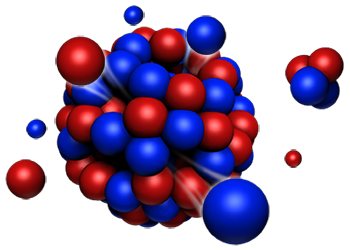Speaker
Description
The European Spallation Source (ESS) is going to be the most powerful spallation neutron source in the world and the flagship of the neutron science in the upcoming decades. The exceptionally high neutron flux will provide unique opportunity for scientific experiments, but also set high requirements for the detectors. One of the most challenging aspects is the rate capability and in particular the peak instantaneous rate capability i.e., the number of neutrons hitting the detector per channel at the peak of the neutron pulse.
In terms of rate capabilities one of the most challenging instrument at ESS will be BIFROST [2,3], a high flux, indirect geometry cold spectrometer, optimized for small samples and extreme environments. As an indirect time-of-flight (ToF) spectrometer, BIFROST will be able to use the full ESS neutron pulse and optimize flux on the sample. This will result in flux as much as 10$^{10}$ neutrons per second on the sample, that in case of strong Bragg-peaks has the potential to saturate or even degrade the detectors, preventing them from being operational during the inelastic peaks.
The simulation of such complex system that contains a 160 meters long instrument with crystalline sample and analysers is far from trivial. 4 different simulation programs and tools, namely McStas [4], Geant4 [5], NCrystal [6] and MCPL [7] were used together to give an estimate of the rates on the detectors, and to serve as a basis for further analysis of the detector system requirements.
The primary purpose of this work is to give estimation of the incident rates that are anticipated for the BIFROST instrument, and also to demonstrate powerful simulation tools for crystallographic applications. Full simulation model of the instrument from source to detector position implemented with the use of multiple simulation software packages is presented, including the first application of a new pyrolytic graphite model with validation against measured data from real samples, and comparison of different simulation tools to highlight their strengths and weaknesses.
$\textbf{References}$
[1] S. Peggs et al., ESS Technical Design Report, ESS 2013-001, 10, 20 (2013).
[2] https://europeanspallationsource.se/instruments/bifrost
[3] P. G. Freeman, et al., CAMEA ESS The continuous angle multi- energy analysis indirect geometry spectrometer for the European Spallation Source, EPJ Web Conf. 83 (2015) 03005.
[4] http://mcstas.org/
[5] http://geant4.cern.ch/
[6] https://mctools.github.io/ncrystal/
[7] https://mctools.github.io/mcpl/

